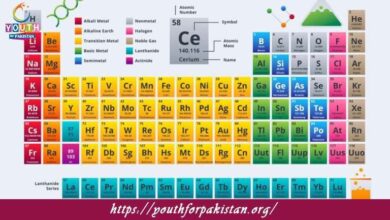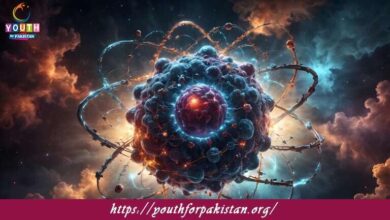12th Class Biology Chapter 22 MCQs with Answers

Deepen your knowledge of Variation and Genetics with focused 12th Class Biology Chapter 22 MCQs. From Mendelian laws to genetic diversity, these questions include trending keywords like genetics MCQs, inheritance biology test, and genetic variation quiz. Perfect for competitive and board exams.
What is the basic unit of heredity responsible for the inheritance of traits?
a) Chromosome
b) Gene
c) Allele
d) DNA
In a heterozygous genotype, the two alleles for a particular gene are:
a) The same
b) Different
c) Dominant
d) Recessive
The observable physical or biochemical characteristics of an organism are referred to as:
a) Genes
b) Alleles
c) Phenotypes
d) Genotypes
Which of the following genetic disorders is caused by an extra copy of chromosome 21?
a) Turner syndrome
b) Down syndrome
c) Klinefelter syndrome
d) Cystic fibrosis
The genetic makeup of an individual, represented by the combination of alleles, is known as:
a) Genotype
b) Phenotype
c) Chromosome
d) DNA
Which type of allele will be expressed even if only one copy is present in the genotype?
a) Recessive allele
b) Dominant allele
c) Homozygous allele
d) Heterozygous allele
In a monohybrid cross between two heterozygous individuals (Aa x A
a), what is the expected genotypic ratio of the offspring?
a) 1:2:1
b) 3:1
c) 1:1:1:1
d) 2:1
The physical location of a gene on a chromosome is known as:
a) Allele
b) Genotype
c) Phenotype
d) Locus
Which of the following genetic disorders is characterized by the absence of one X
chromosome in females (X0)?
a) Turner syndrome
b) Down syndrome
c) Klinefelter syndrome
d) Cystic fibrosis
The genetic makeup of an individual is determined by:
a) Chromosomes inherited from the mother only
b) Chromosomes inherited from the father only
c) A combination of chromosomes inherited from both parents
d) Environmental factors
Mendel’s law that states each pair of alleles segregates independently of other pairs of
alleles during gamete formation is known as:
a) Law of independent assortment
b) Law of segregation
c) Law of dominance
d) Law of inheritance
Which of the following genetic disorders is caused by a mutation in the CFTR gene, leading to the production of thick mucus in the respiratory and digestive systems?
a) Turner syndrome
b) Down syndrome
c) Klinefelter syndrome
2
d) Cystic fibrosis
What is the term for the different forms of a gene at a specific locus?
a) Allele
b) Genotype
c) Phenotype
d) Locus
In a Punnett square, which of the following represents a heterozygous individual?
a) AA
b) Aa
c) aa
d) BB
The genetic disorder caused by the presence of an extra X chromosome in males (XXY) is known as:
a) Turner syndrome
b) Down syndrome
c) Klinefelter syndrome
d) Cystic fibrosis
Which of the following genetic disorders is caused by the presence of an extra Y
chromosome in males (XYY)?
a) Turner syndrome
b) Down syndrome
c) Klinefelter syndrome
d) Cystic fibrosis
Mendel’s law that states each individual has two alleles for each trait and they segregate
during gamete formation, with only one allele passing to each gamete, is known as:
a) Law of independent assortment
b) Law of segregation
c) Law of dominance
d) Law of inheritance
Which of the following genetic disorders is caused by the presence of an extra X
chromosome in males (XXY)?
a) Turner syndrome
b) Down syndrome
c) Klinefelter syndrome
d) Cystic fibrosis
What is the probability of producing an offspring with a dominant phenotype from a heterozygous individual (Aa)?
a) 1/2
b) 1/4
c) 3/4
d) 2/3
The genetic disorder caused by the absence of one X chromosome in females (X0) is known as:
a) Turner syndrome
b) Down syndrome
c) Klinefelter syndrome
d) Cystic fibrosis
The process by which DNA is copied to produce an identical strand is called:
a) Translation
b) Transcription
c) Replication
d) Mutation
A mutation that involves the insertion or deletion of a single nucleotide in the DNA
sequence, leading to a shift in the reading frame, is called:
a) Silent mutation
b) Missense mutation
c) Nonsense mutation
d) Frameshift mutation
Which of the following is a genetic disorder caused by the absence of an enzyme that breaks down a specific substance in the body, leading to the accumulation of harmful substances?
a) Turner syndrome
b) Down syndrome
c) Phenylketonuria (PKU)
d) Cystic fibrosis
The process by which genetic information in DNA is transcribed into messenger RNA (mRN
A) is called:
a) Translation
b) Transcription
c) Replication
d) Mutation
A mutation that results in the substitution of one nucleotide in the DNA sequence, leading to the change of a single amino acid in the protein, is called:
a) Silent mutation
b) Missense mutation
c) Nonsense mutation
d) Frameshift mutation
In a dihybrid cross between two individuals (AaBb x AaB
b), what is the expected phenotypic ratio of the offspring?
a) 1:2:1
b) 9:3:3:1
c) 3:1
d) 1:1:1:1
Which of the following genetic disorders is caused by the absence of an enzyme that breaks down a specific substance in the body, leading to the accumulation of mucus in the respiratory and digestive systems?
a) Turner syndrome
b) Down syndrome
c) Phenylketonuria (PKU)
d) Cystic fibrosis
The process by which genetic information in mRNA is translated into a sequence of amino acids to form a protein is called:
a) Translation
b) Transcription
c) Replication
d) Mutation
In a dihybrid cross between two individuals (AaBb x AaB
b), what is the expected ratio of homozygous dominant offspring for both traits?
a) 1/4
b) 1/2
c) 1/8
d) 1/16
The genetic disorder caused by the presence of an extra Y chromosome in males (XYY) is known as:
a) Turner syndrome
b) Down syndrome
c) Klinefelter syndrome
d) Cystic fibrosis
In a monohybrid cross between two individuals (Aa x A
a), what is the expected phenotypic ratio of the offspring?
a) 1:2:1
b) 3:1
c) 1:1:1:1
d) 2:1
A mutation that results in the premature termination of protein synthesis due to the presence of a stop codon in the DNA sequence is called:
a) Silent mutation
b) Missense mutation
c) Nonsense mutation
d) Frameshift mutation
The genetic disorder caused by the absence of an enzyme that breaks down a specific substance in the body, leading to intellectual disability and other neurological symptoms, is known as:
a) Turner syndrome
b) Down syndrome
c) Phenylketonuria (PKU)
d) Tay-Sachs disease
What is the term for the random change in the frequency of alleles in a population over time?
a) Natural selection
b) Genetic drift
c) Gene flow
d) Mutation
A mutation that does not result in a change in the amino acid sequence of a protein is called:
a) Silent mutation
b) Missense mutation
c) Nonsense mutation
d) Frameshift mutation
Which of the following genetic disorders is caused by the presence of an extra copy of chromosome 21?
a) Turner syndrome
b) Down syndrome
c) Klinefelter syndrome
d) Cystic fibrosis
The genetic disorder caused by the absence of an enzyme that breaks down phenylalanine, leading to intellectual disability and other neurological problems, is known as:
a) Turner syndrome
b) Down syndrome
c) Phenylketonuria (PKU)
d) Cystic fibrosis
The process by which individuals with certain inherited traits are more likely to survive and reproduce in a given environment is known as:
a) Natural selection
b) Genetic drift
c) Gene flow
d) Mutation
In a monohybrid cross between two individuals (Aa x A
a), what is the expected genotypic ratio of the offspring?
a) 1:2:1
b) 3:1
c) 1:1:1:1
d) 2:1
The process by which genes are transferred from one population to another through the movement of individuals is known as:
a) Natural selection
b) Genetic drift
c) Gene flow
d) Mutation
A cross between two individuals that are heterozygous for a single trait (Aa x A
a) is called:
a) Dihybrid cross
b) Monohybrid cross
c) Test cross
d) Back cross
The genetic disorder caused by the absence of an enzyme that breaks down a specific substance in the brain, leading to a progressive deterioration of motor and mental abilities, is known as:
a) Turner syndrome
b) Down syndrome
c) Phenylketonuria (PKU)
d) Tay-Sachs disease
What is the probability of producing an offspring with a recessive phenotype from a heterozygous individual (A
a)?
a) 1/2
b) 1/4
c) 3/4
d) 2/3
The genetic disorder caused by the presence of an extra X chromosome in males (XXY) is known as:
a) Turner syndrome
b) Down syndrome
c) Klinefelter syndrome
d) Cystic fibrosis
The genetic disorder caused by the presence of an extra Y chromosome in males (XYY) is known as:
a) Turner syndrome
b) Down syndrome
c) Klinefelter syndrome
d) Cystic fibrosis
The genetic disorder caused by the absence of an enzyme that breaks down a specific substance in the body, leading to intellectual disability and other neurological symptoms, is known as:
a) Turner syndrome
b) Down syndrome
c) Phenylketonuria (PKU)
d) Tay-Sachs disease
A cross between two individuals that are heterozygous for two different traits (AaBb x
AaB
b) is called:
a) Dihybrid cross
b) Monohybrid cross
c) Test cross
d) Back cross
In a dihybrid cross between two individuals (AaBb x AaB
b), what is the expected phenotypic ratio of the offspring?
a) 1:2:1
b) 9:3:3:1
c) 3:1
d) 1:1:1:1
The genetic disorder caused by the absence of an enzyme that breaks down phenylalanine, leading to intellectual disability and other neurological problems, is known as:
a) Turner syndrome
b) Down syndrome
c) Phenylketonuria (PKU)
d) Cystic fibrosis
The process by which individuals with certain inherited traits are more likely to survive and reproduce in a given environment is known as:
a) Natural selection
b) Genetic drift
c) Gene flow
d) Mutation
In a monohybrid cross between two individuals (Aa x A
a), what is the expected genotypic ratio of the offspring?
a) 1:2:1
b) 3:1
c) 1:1:1:1
d) 2:1
The process by which genes are transferred from one population to another through the movement of individuals is known as:
a) Natural selection
b) Genetic drift
c) Gene flow
d) Mutation
A cross between two individuals that are heterozygous for a single trait (Aa x A
a) is called:
a) Dihybrid cross
b) Monohybrid cross
c) Test cross
d) Back cross
The genetic disorder caused by the absence of an enzyme that breaks down a specific substance in the brain, leading to a progressive deterioration of motor and mental abilities, is known as:
a) Turner syndrome
b) Down syndrome
c) Phenylketonuria (PKU)
d) Tay-Sachs disease
What is the term for the random change in the frequency of alleles in a population over time?
a) Natural selection
b) Genetic drift
c) Gene flow
d) Mutation
A mutation that does not result in a change in the amino acid sequence of a protein is called:
a) Silent mutation
b) Missense mutation
c) Nonsense mutation
d) Frameshift mutation
Which of the following genetic disorders is caused by the presence of an extra copy of chromosome 21?
a) Turner syndrome
b) Down syndrome
c) Klinefelter syndrome
d) Cystic fibrosis
The genetic disorder caused by the absence of an enzyme that breaks down a specific substance in the body, leading to intellectual disability and other neurological symptoms, is known as:
a) Turner syndrome
b) Down syndrome
c) Phenylketonuria (PKU)
d) Tay-Sachs disease
If you are interested to enhance your knowledge regarding Physics, Chemistry, Biology, and Computer please click on the link of each category, you will be redirected to dedicated website for each category.





